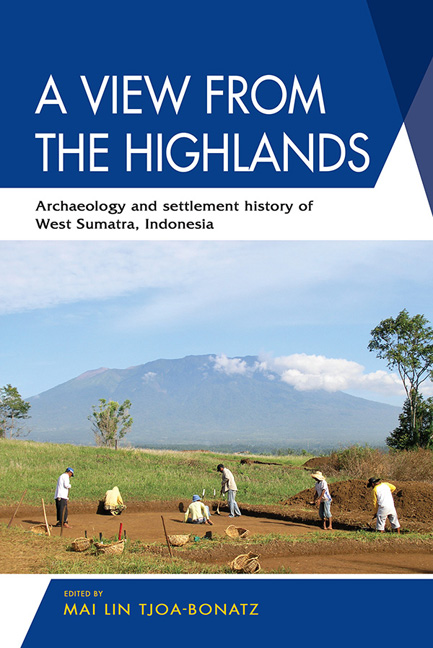Book contents
- Frontmatter
- Contents
- List of Tables
- List of Maps
- List of Figures
- List of Colour Plates
- Abbreviations and Acronyms
- Preface and Acknowledgements
- About the Contributors
- 1 Research History, Methods, and Objectives
- 2 Early Histories: Historiography and Archaeological Surveys
- 3 Excavations
- 4 Material Culture Studies
- 5 Conclusion
- Bibliography
- Index
- Plate section
3 - Excavations
Published online by Cambridge University Press: 24 January 2020
- Frontmatter
- Contents
- List of Tables
- List of Maps
- List of Figures
- List of Colour Plates
- Abbreviations and Acronyms
- Preface and Acknowledgements
- About the Contributors
- 1 Research History, Methods, and Objectives
- 2 Early Histories: Historiography and Archaeological Surveys
- 3 Excavations
- 4 Material Culture Studies
- 5 Conclusion
- Bibliography
- Index
- Plate section
Summary
The Prehistoric Settlement Site of Tanah Lua (Dominik Bonatz)
During the archaeological survey carried out in 2011, numerous sherds of pottery, a polished stone axe, and other stone objects were found on a slope below Pagaruyung overlooking the Selo River valley, an area that had been terraced shortly before the time of the survey (see Figure 3.1). The coarse construction of the pottery and the discovery of an axe suggested that the site was older than those at Bukit Gombak and Bukit Kincir. It faces Bukit Gombak, which stands beyond the narrow riverbed of the Selo River, and its prominent location helped attract archaeological interest (see Figure 3.2). Only 50 m below the site, a spring called Bapahat flows out of a cliff that rises steeply over the river (see Figure 2.12), and for this reason the area is called Tanah Lua, “Land of the Spring”.
In 2012, excavations began in an 8×12 m area (Trench A) on a natural terrace (see Figure 3.2). To the east, the area was bordered by the rising slope. To the west there was a sharp drop off where the ground had been terraced. Objects collected here in 2011 had been found in a dark layer of earth beneath more recent layers of humus. The layers are clearly visible in the eastern profile section of the terrace wall. The excavations in Trench A were intended to provide information about how far this older cultural layer continued, and whether it contained further finds and traces of settlement activities.
The excavations confirmed the order of the natural deposits seen in the large profile section of the terrace wall. After a dark, black humus layer 15–20 cm thick was a compact, reddish-brown, clay-like layer of earth. After 1 m the clay layer changed to yellowish-brown, sandy, and very compact dirt. There was little to find in the humus layer, while the layer of earth beneath it yielded only a few sherds of very rough ceramic and a small number of obsidian flakes found in the southern area of the trench. No anthropogenic traces were observed. These meagre results led us to shift our investigation to the southern part of the natural terrace, where there had been no modern disturbances (see Figure 3.2).
- Type
- Chapter
- Information
- A View from the HighlandsArchaeology and Settlement History of West Sumatra, Indonesia, pp. 91 - 133Publisher: ISEAS–Yusof Ishak InstitutePrint publication year: 2019



